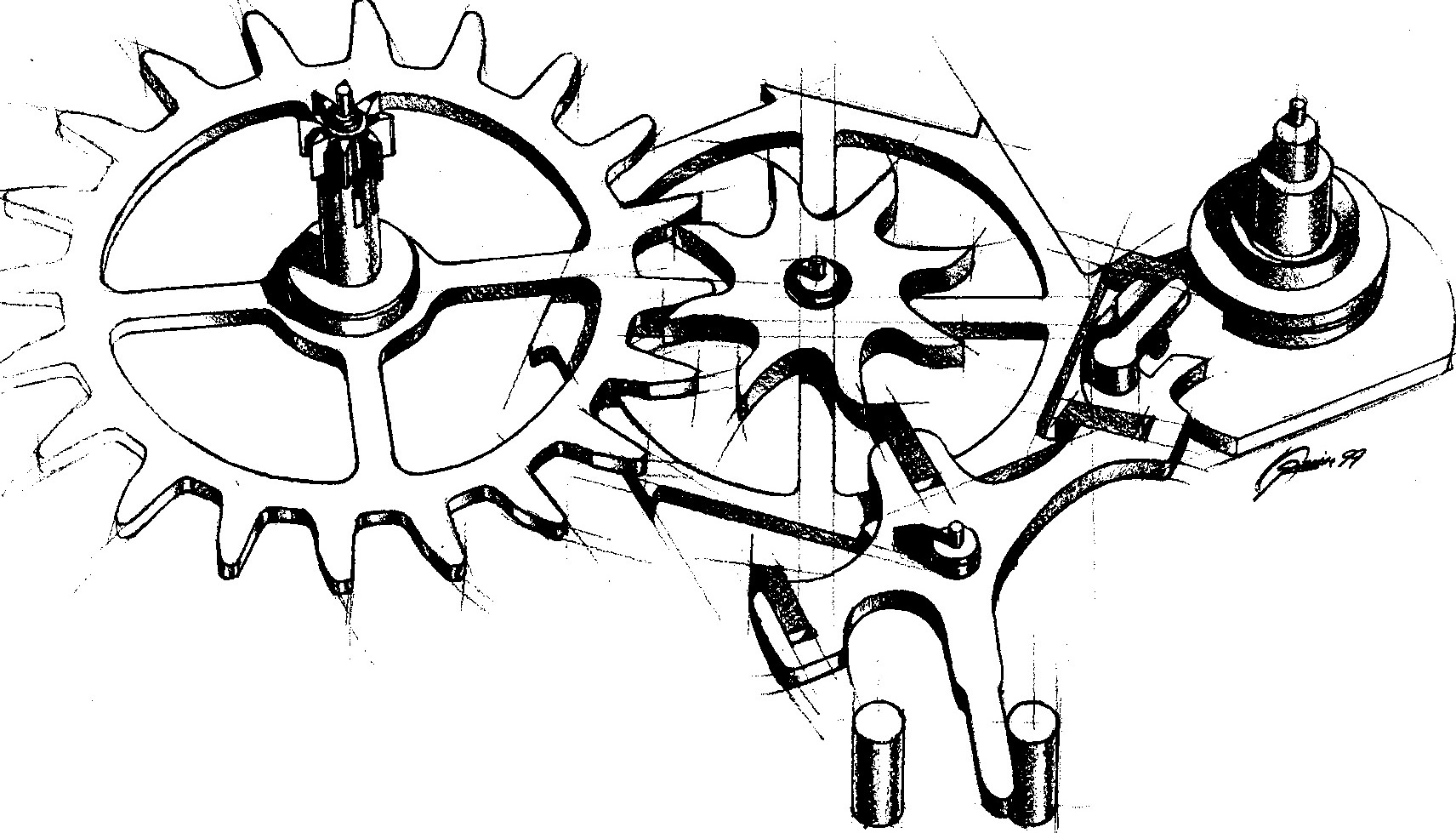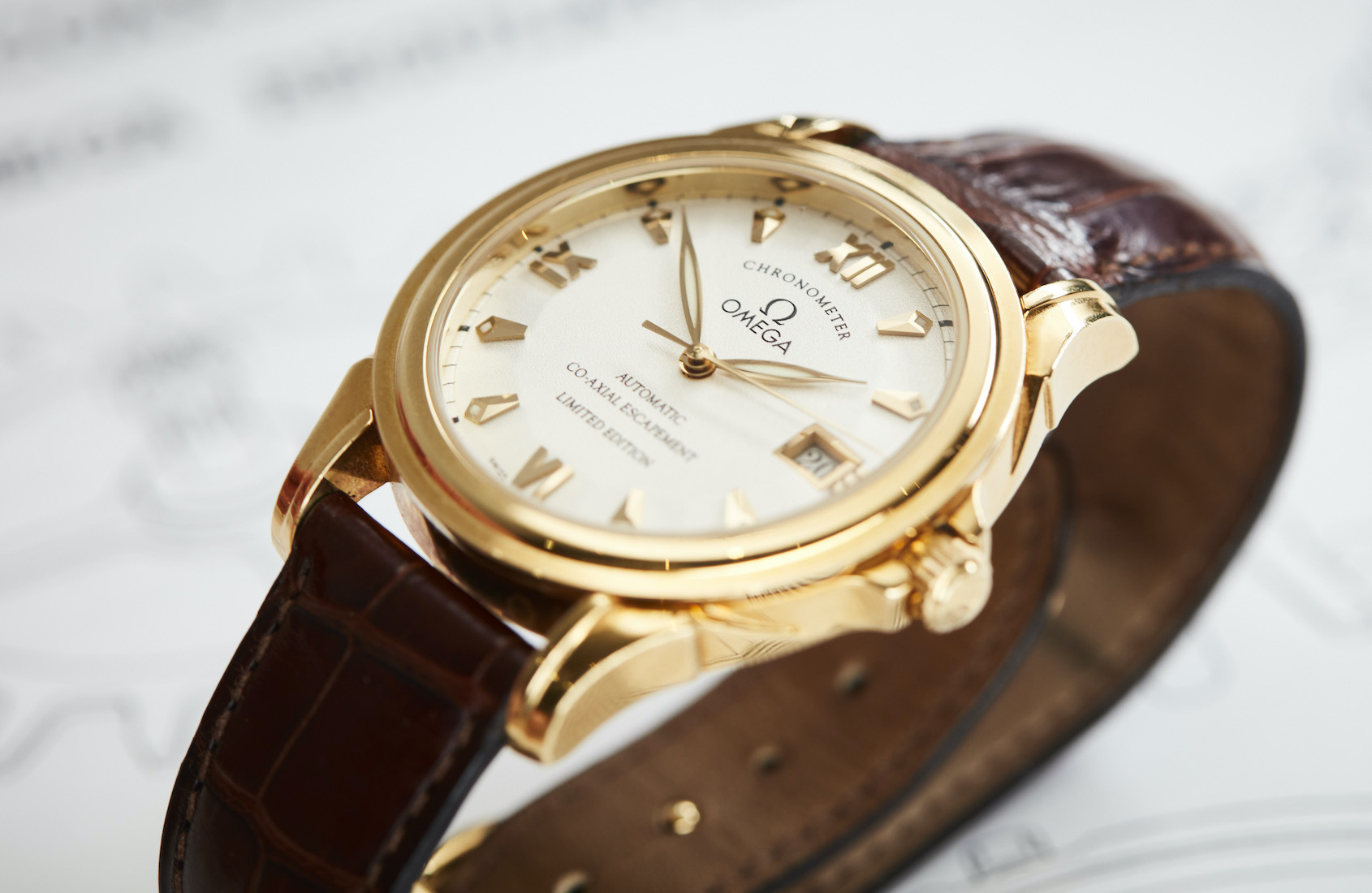Long read: Omega De Ville Co-Axial Escapement Limited Edition, a piece of watchmaking history
Nick KenyonGeorge Daniels is almost universally recognised as the greatest watchmaker of his lifetime, and even if you haven’t heard of him, you might have seen evidence of his work on the dial of millions of Omega watches around the world — the words CO-AXIAL. His most significant contribution to watchmaking was the development of his co-axial escapement, the first serious step forward in watchmaking in more than 200 years, and was first put to work in the Omega De Ville Co-Axial Escapement Limited Edition. That’s right, not much had changed in two centuries before Daniels began his work. His co-axial escapement was important because not only did it improve the accuracy of a typical mechanical watch, but it also vastly improved the mechanical efficiency of the movement so that it would need less regular servicing. Legend has it that Daniels woke in the middle of the night with a complete picture of what the escapement would look like, but really it was the cumulative efforts of 20 years of work that led him to develop his invention.
In essence, the co-axial escapement was successfully able to eliminate almost all friction between the pallet fork and the escape wheel, an improvement on the lever escapement that was invented by fellow British clockmaker Thomas Mudge around 1755. The lever escapement required lubrication for the tiny pallets to slide smoothly against the escape wheel, but changes in temperature and humidity would affect the lubricant, impacting on the accuracy of the movement. Over time, the lubricant would also become thick and viscous, further preventing the movement from running smoothly, and requiring frequent services for the watchmaker to reapply fresh lubricant.

While this development made perfect sense in the world of mechanical watchmaking, there was one problem. George Daniels invented the co-axial escapement in 1974, just when the Quartz Crisis was being felt most seriously in the Swiss watch industry. Daniels didn’t get a patent for his new mechanism until 1980, at which point he began approaching large watch manufacturers to convince them to use his invention in their watches. At a time when quartz technology had spent the better part of a decade decimating the industry he was trying to sell to, there was very little appetite for investing in mechanical watches. Despite several knock-backs from some of the largest watch manufacturers in the world, George was unperturbed, explaining that, despite the rejections, he was “personally not in doubt that mechanical watches would survive”.

“Its historic, technical, intellectual, aesthetic, amusing and useful qualities would sustain it through the ages,” said Daniels. “But it was in need of improvement if its attractions were not to be swamped by quartz timekeeping.” He went on to express that “when the quartz excitement diminishes and sales become steady statistics, what would then be appealing to the discerning public?” The answer? He believed it would be the co-axial escapement.
It wasn’t until the 1990s that through sheer dogged determination Daniels came to an agreement with Omega to use his mechanism in their watches. In 1999 they released the first-ever serially produced watch to feature the co-axial escapement, in the Omega De Ville Co-Axial Escapement Limited Edition. These were first released in yellow gold with a slivered dial, and red gold with a midnight blue dial, in editions of 1000 pieces, as well as 100 cased in platinum with a copper dial. The movement powering these watches was the new Omega caliber 2500, which in the technical description for the movement, boasted the merits of the new escapement as having only a few hundredths of a millimetre of sliding friction, compared to the typical lever escapement which had 14mm of sliding friction. No small achievement, and an appropriate note to begin the next century of watchmaking progress.

Daniels was given number 000/999 in the series by Omega, a watch that remained in his collection until his passing in 2011. This watch was included in the George Daniels Horological Collection auction hosted by Sotheby’s in 2012, and was bought by the Omega Museum, where it remains. This was another watch Time+Tide experienced in the metal in 2015, when we hosted the “Omega Night of Firsts” alongside Omega Museum manager Petros Protopapas.

I was fortunate enough to borrow one of these first Omega De Ville Co-Axial Escapement Limited Edition pieces produced in 1999, from a friend of Time+Tide. It was an opportunity to wear it for a few weeks, and to get a better understanding of one of the most important releases from Omega in recent decades. It is a watch that has secured its place in the history books as it has made its way into the collections of no less than three museums — of course the Omega Museum plus the British Museum Clock & Watch collection and the Worshipful Company of Clockmakers Collection. While certainly sitting outside the bubble of vintage stainless steel sports watches, it is a piece that draws its significance from the contribution it made to the history of watchmaking, a feat that almost no other watch can lay claim to in the last half century. It is a remarkable feat of technical innovation, and final vindication of George Daniels’ faith in the future of the mechanical wristwatch.
The dial
The dial of the Omega De Ville Co-Axial Escapement Limited Edition is a rarity in the De Ville family, and is closer to the pie-pan dials of the Omega Constellations of the 1950s. It has a granular quality to it that contrasts nicely with the highly polished and heavily faceted hour markers that catch the light with every movement of your wrist. The cardinal points are marked with blocky Roman numerals, with a date window framed with the same yellow gold as the rest of the dial furniture. At the inner point of each hour marker you can see the dial slope ever so gently downward, a change of angle that is most noticeable in the frame of the date window. While there is quite a lot of dial text, it is well balanced at 6 o’clock and 12 o’clock, and is in the same crisp lettering as the minute indicators that run the circumference of the dial. The leaf hands and most hour markers are filled with luminescent material (specifically noted in the brochure as “non-radioactive”. Phew). This might be a deal breaker for dress watch purists who hate reading the time at night, but I feel it speaks to the philosophy of George Daniels to make practical watches that can be worn every day. The same can be said for the inclusion of the date window. Yes, the symmetry is compromised, but at the gain of a useful daily function. Very George Daniels.
The case
The solid yellow gold case measures 38mm in diameter, which is just about perfect. The horned lugs are long, which makes it wear slightly larger while still being very comfortable, and the stepped lugs are gently curved downward, offering an impression of articulate classicism. In further evidence of Daniels’ preference for daily function over occasionally appreciated form, the case also has small crown guards to protect against the bumps and scrapes of regular use. Turn the watch over and we are greeted with a fairly plain caseback, with CO-AXIAL ESCAPEMENT and the number of the edition.
The bezel
The stepped bezel of the Omega De Ville Co-Axial Escapement Limited Edition is unobtrusive, and nicely frames the dial as a result. The blend of harder angles within the curve of the bezel and lugs invokes a sense of the Doric order columns of ancient Greece, a period Omega draw from with their Chronos medallion that has been in use by the brand since 1895 (a symbol that pays tribute to the pre-Socratic god of philosophy and literature).
The movement
I’ve already spoken about the significance of the Omega caliber 2500, so I won’t delve too much deeper. It was based originally on Swatch Group’s very own ETA 2892, but modified to fit the co-axial escapement. Despite being a notoriously hard man to please, Daniels recounts his close work with the Omega watchmakers fondly.
“Because I regard the escapement as my baby, I have kept very close to the technicians during the run-up to production,” he said. “Working with others is a new experience for me and I have much enjoyed the relationship that has developed between the company, its technicians and myself. The end product is most satisfying to see working and it is of course a thrill for an inventor to see his aspirations fulfilled so perfectly. The performance in tests has been remarkable, showing improvement in long-term day-to-day use that cannot be equalled by the classic lever escapement.”
The strap
Fastening the watch to your wrist is a rich reddy brown croc leather strap. Again, perhaps looking for long-term comfort and practicality, it is secured with a yellow gold folding clasp that is easy to adjust and incredibly comfortable.
On the wrist
Once safely secured with the satisfying click of the folding clasp, you can feel the heft of the solid gold case straight away. It isn’t too heavy, however, and is actually nicely balanced with the slightly heavier than normal clasp on the inside of your wrist countering with poise. The croc leather strap is soft and supple, and the gold warms against your wrist as you wear it, making it hard to want to take off. If you wear a button-down shirt to the office, this could easily be an everyday watch, and will definitely get more people talking than wearing a black dial, steel case dive watch.
The verdict
The Omega De Ville Co-Axial Escapement Limited Edition is a fantastic watch. There is absolutely no doubt about it. Not only are you wearing a piece of horological history on your wrist, but it is comfortable, practical in its design and looks great on the wrist.
Who’s it for?
Anyone who loves watches. If you can’t appreciate why this thing is special, you might be in the wrong hobby.
What would we change?
Honestly, not much. Lug width of 19mm might be tricky if you wanted to change the strap. Also, the fact it is a limited edition is a shame, because only 2100 people (or museums) can own one.
Pricing and availability
Assessing price and availability of the Omega De Ville Co-Axial Escapement Limited Edition is tricky as (though it might not quite be vintage) it was released and sold out in 1999. In yellow gold with a slivered dial there were 1000 pieces, and red gold with a midnight blue dial was also produced in 1000 pieces. There were also 100 cased in platinum with a copper dial.
All pieces have been sold, though they do appear at auction or independent dealers with regularity. At time of writing, there are currently nine examples listed on online marketplace Chrono24, at an average price of around AUD$12,000.













